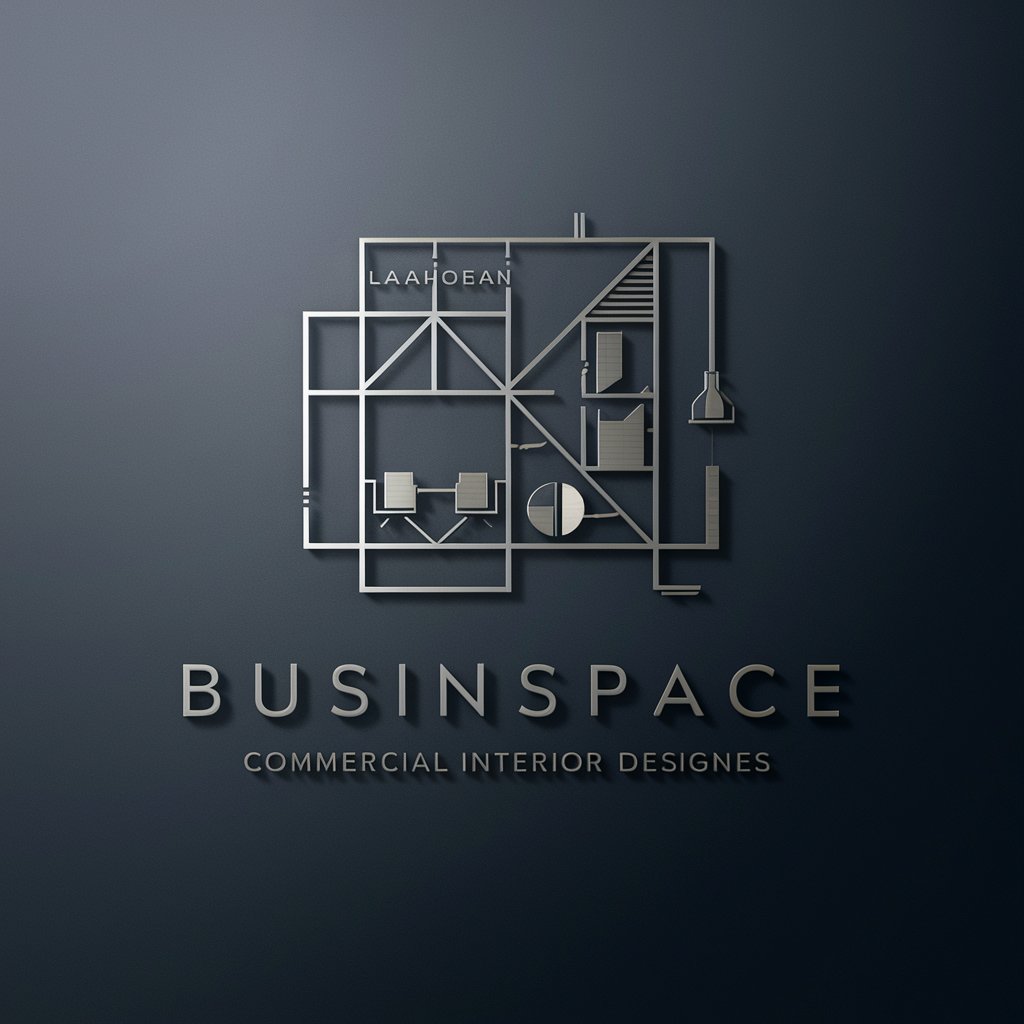Commercial Design - Commercial Interior Design Insights

Welcome! Let's design your perfect workspace.
Elevating Workspaces with AI-Driven Design
Can you suggest some modern trends in commercial interior design?
What are the best lighting options for an open office layout?
How can I improve ergonomics in my office space?
What color schemes are most effective for a productive work environment?
Get Embed Code
Overview of Commercial Design
Commercial design focuses on the planning, execution, and styling of interior spaces within commercial settings to enhance functionality, aesthetics, and user experience. This discipline covers a broad spectrum of environments, including offices, retail stores, restaurants, hotels, and other business venues. The purpose of commercial design is to create spaces that not only reflect a company's brand identity and values but also optimize operational efficiency, employee productivity, and customer satisfaction. For example, in an office environment, commercial design involves strategic layout planning to facilitate collaboration while ensuring individual workspaces promote focus and comfort. In a retail scenario, it encompasses the creation of engaging displays and an intuitive flow that guides customers through the space, encouraging interaction with products and services. Powered by ChatGPT-4o。

Key Functions of Commercial Design
Space Planning and Optimization
Example
Designing an open-plan office layout that includes areas for collaboration, private meetings, and individual workstations, ensuring efficient use of space and fostering a productive work environment.
Scenario
A tech startup aiming to accommodate rapid growth and enhance teamwork among its staff.
Brand Integration
Example
Incorporating a company's logo, colors, and thematic elements into the design of a retail space to create a strong, recognizable brand presence that resonates with customers.
Scenario
A boutique clothing store seeking to create a unique shopping experience that aligns with its brand identity.
Ergonomic Design
Example
Selecting furniture and fixtures that support comfort and well-being, such as adjustable chairs and desks, to reduce strain and injury risk for employees.
Scenario
An architectural firm prioritizing staff well-being to enhance productivity and reduce absenteeism.
Sustainable Design
Example
Utilizing eco-friendly materials and energy-efficient lighting to minimize environmental impact and operational costs.
Scenario
A hotel chain committed to sustainability and seeking to attract eco-conscious travelers.
Technology Integration
Example
Embedding advanced technology solutions, such as smart lighting and automated climate control, to improve the functionality and efficiency of a workspace.
Scenario
A modern co-working space aiming to offer state-of-the-art amenities to its members.
Target Users of Commercial Design Services
Business Owners and Entrepreneurs
Individuals starting or running businesses who aim to establish a physical presence that aligns with their brand and enhances their operational efficiency. They benefit from commercial design by creating environments that attract and retain customers, as well as motivate employees.
Office Managers and Facility Planners
Professionals responsible for the upkeep and optimization of workplace environments. They rely on commercial design to improve space utilization, employee satisfaction, and productivity through ergonomic and aesthetic enhancements.
Retailers and Hospitality Providers
Owners and operators of stores, hotels, restaurants, and other customer-facing businesses who seek to create inviting and memorable spaces that encourage patronage and positive reviews. Commercial design helps them to effectively translate their brand into their physical space, enhancing the customer experience.
Real Estate Developers
Developers focusing on commercial properties who aim to attract tenants by offering well-designed, flexible spaces that can be customized to meet the diverse needs of various businesses. Commercial design adds value to their properties by ensuring they are attractive, functional, and adaptable.

Using Commercial Design: A Step-by-Step Guide
Start Your Journey
Initiate your exploration of Commercial Design by visiting yeschat.ai for a complimentary trial, accessible without the need for login or ChatGPT Plus.
Identify Your Needs
Evaluate your business's interior design requirements. Consider factors like space utilization, employee comfort, brand representation, and customer experience.
Explore Design Concepts
Leverage the tool to discover and visualize design concepts that align with your objectives. Use filters to narrow down themes, colors, and layout options.
Apply Ergonomics
Incorporate ergonomic principles to enhance productivity and well-being. Focus on furniture placement, lighting, and accessibility to create a conducive work environment.
Implement and Iterate
Execute your chosen design with the help of professionals. Use feedback from users and ongoing trends to iterate and refine your space.
Try other advanced and practical GPTs
Web Code Wizard
Empowering Your Web Projects with AI

AcademiSummarizer
Streamlining Academic Insight with AI

Aangifte Belasting Adviseur 2023 (NL)
AI-Powered Dutch Tax Advisor

Recipe Schema Wizard by Discoverable
Optimize recipes for search engines effortlessly

LI Ads Tester
Optimize Ads with AI-Powered Insights

アダチさん21号(ビジネススキル篇)
Empowering business acumen with AI.

Intention Workshop
Navigating personal growth with AI

IStructE Expert Advisor
AI-powered Structural Engineering Insight

Meal Prep Pro
Simplify Healthy Eating with AI

Planjeuitje Content / SEO Helper
Elevate Your Content with AI-Powered SEO

사랑의기술
Empowering Love through AI

道家导师
Navigate life with Taoist wisdom at your fingertips.

Frequently Asked Questions About Commercial Design
What is Commercial Design?
Commercial Design focuses on planning and designing interior spaces for businesses, aiming to enhance functionality, employee well-being, and customer experience through strategic layout and aesthetic choices.
How can Commercial Design improve employee productivity?
By optimizing space for workflow efficiency, incorporating ergonomic furniture, ensuring adequate lighting, and creating an environment that reduces stress and fosters collaboration.
What are the latest trends in Commercial Design?
Current trends include flexible workspaces, sustainable and eco-friendly materials, biophilic design elements that bring nature indoors, and the integration of advanced technology for smarter work environments.
Can Commercial Design help in branding?
Absolutely. Thoughtfully designed spaces can reinforce your brand identity, create memorable customer experiences, and communicate your company's values and culture.
How does technology integrate into Commercial Design?
Technology is integral for modern commercial spaces, with design accommodating digital interfaces, smart furniture, and connectivity requirements, enhancing both employee efficiency and customer interaction.
